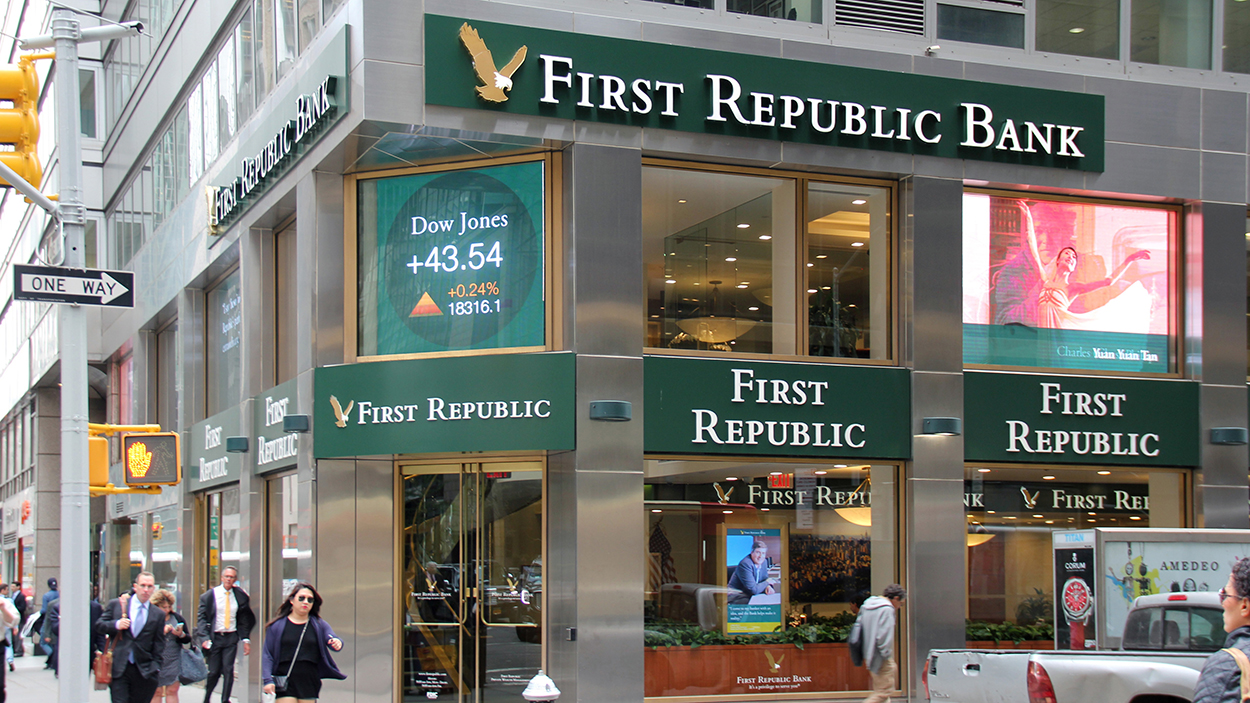On International Workers’ Day, the First Republic Bank became the second largest bank to fail in US history. The USD 233 billion institution was seized by the government and sold to banking behemoth JPMorgan Chase.
First Republic is the third bank to fail in the US since March, surpassing the spectacular failure of Silicon Valley Bank (SVB) on March 10. SVB’s depositors were bailed out by the US government to the tune of USD 151 billion. Up until May 1, SVB had been the second largest bank failure in the history of the country. Capitalists in the United States did not predict that this title would be usurped less than two months later.
Following SVB, Signature Bank, a New York-based institution with a large real estate lending business, also failed only two days later. Amid the banking crisis panic, First Republic Bank received a USD 30 billion lifeline from 11 of the largest banks in the country. This attempt to stave off First Republic’s failure would prove unsuccessful.
The total assets of the 2023 bank failures now surpass those of the bank failures of 2008, the first year of the Great Recession. The US Treasury Department has claimed that the nation’s banking system is “sound and resilient” following First Republic’s collapse.
First Republic’s failure is directly tied to the Federal Reserve’s raising of interest rates. The US Federal Reserve has decided to address the inflation crisis by hiking up interest rates. As a result of increased interest rates, the economy slows. Prices go down because of this generated economic slump and economically unsound businesses begin to close, and banks lend less money. From top to bottom, every player in the economy becomes more discerning, and overinflating the value of commodities becomes harder, thus decreasing inflation.
The effects of a this blow in the name of combating inflation include mass unemployment, as well as politicians using an economic crisis as an excuse to cut social services. Capitalists could have been held accountable for causing the inflation crisis, but they have not been. The US government chose not to implement measures such as price caps, higher taxes on the wealthy and corporations, and the nationalization of private institutions such as banks. Ultimately, through raising interest rates, the Federal Reserve is forcing workers to bear the brunt of the inflationary crisis, rather than capitalists, who have been in charge of raising prices in the first place.
Another side effect of the rising interest rates has been these latest bank failures. As interest rates on loans and investments go up, they begin to lose their value, and bank clients begin to pull their money out of the banks. Because banks are designed to gamble with clients’ deposits, not actually save them, when too many people pull their money out at once, the bank collapses.
JPMorgan Chase was already one of the largest banks in the world before its latest acquisition of First Republic. The megabank also acquired Washington Mutual in 2008, after it collapsed in what is still the largest bank failure in US history. JPMorgan Chase owns over 10% of all deposits in the US, making it technically ineligible to acquire another deposit-taking institution, according to US regulations. For this, authorities made an exception. JP Morgan’s acquisition of First Republic shows how moments of crisis under capitalism often result in further monopolization.





